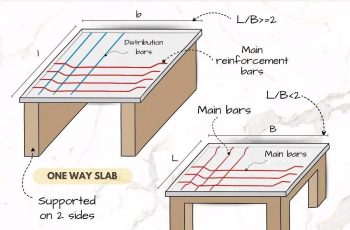Transforming your basement from a dark, damp space into a usable area can greatly increase your home’s living space and value. Painting the basement walls is often the first step in this transformation, and while it might seem daunting, it’s a manageable DIY project with the right preparation and approach. This guide will walk you through the process, step by step.
Preparing the Walls
Before you even think about picking up a paintbrush, proper preparation is key. This includes cleaning the walls thoroughly to remove dirt, dust, mildew, and any loose paint. A wire brush or scraper might be necessary for stubborn areas. Consider using a mildew-killing solution like bleach and water (find a recipe online) for extra protection. Once clean and dry, make any necessary repairs to cracks or holes using spackle. Allow ample time for the spackle to dry completely before sanding smooth. 
Choosing the Right Paint
Basement walls present unique challenges. High humidity and potential moisture necessitate using a paint specifically designed for damp environments. Look for paints labeled as mold-resistant or mildew-resistant. Learn more about choosing the right paint for basement walls. Semi-gloss or satin finishes are generally preferred for basements as they’re easier to clean and more durable than matte finishes. [IMAGE_2_HERE]
Priming the Walls
Priming is crucial, especially if you’re painting over bare concrete or previously painted surfaces with significant imperfections. A good primer will seal the surface, preventing moisture from seeping through and improving the paint’s adhesion. Consider a stain-blocking primer if you’re covering any stains. Allow the primer to dry completely according to the manufacturer’s instructions. Check out our guide on primer selection.
Painting the Walls
Once the primer is dry, you can start painting! Use a high-quality paint roller and brush for even coverage. For best results, apply two coats of paint, allowing each coat to dry completely before applying the next. Work in sections, and don’t forget to paint the trim and corners carefully. [IMAGE_3_HERE]
Protecting Your Floors and Yourself
Protecting your floors is essential to prevent paint spills and splatters. Cover the floor with drop cloths or plastic sheeting. Also, wear appropriate protective gear, including gloves, eye protection, and a respirator, especially when working with primers and paints that emit strong fumes. Safety should always be a priority.
Adding Finishing Touches
After the paint is dry, consider adding finishing touches to complete your basement makeover. This could involve installing new lighting, adding shelving, or even incorporating some decorative elements. Remember that proper ventilation is key to preventing future moisture problems. You can learn more about basement ventilation here.
Dealing with Moisture Issues
Before you begin painting, it’s important to address any existing moisture problems in your basement. High humidity levels can lead to mold and mildew growth, even with mold-resistant paint. Consider using a dehumidifier to control humidity levels. Check for leaks and cracks in the foundation and repair them promptly. Consult a professional for serious moisture problems.
Maintaining Your Painted Basement
Regular cleaning and maintenance will help keep your freshly painted basement looking its best for years to come. Periodically wipe down the walls to remove dust and dirt, and address any new moisture issues promptly. Regular inspections will help prevent costly repairs.
In conclusion, painting your basement walls is a rewarding project that can significantly improve your home. By following these steps and prioritizing preparation and the right materials, you can achieve a professional-looking finish. Remember to always prioritize safety and address any underlying moisture issues.
Frequently Asked Questions
What type of paint is best for basement walls? Use a paint specifically designed for damp environments, such as a mold-resistant or mildew-resistant paint. Semi-gloss or satin finishes are ideal for durability and easy cleaning.
How long does basement paint take to dry? Drying time varies depending on the paint and environmental conditions. Always check the manufacturer’s instructions for the recommended drying time before applying another coat.
Do I need to prime basement walls before painting? Priming is highly recommended, especially on bare concrete or if covering stains. Primer seals the surface, improving paint adhesion and preventing moisture issues.
What should I do if I see mold or mildew? Address any mold or mildew growth immediately. Clean the affected area with a mildew-killing solution, and consider using a mold-resistant primer and paint.
How can I prevent moisture problems in my basement? Ensure proper ventilation, address any leaks or cracks promptly, and use a dehumidifier to control humidity levels.

